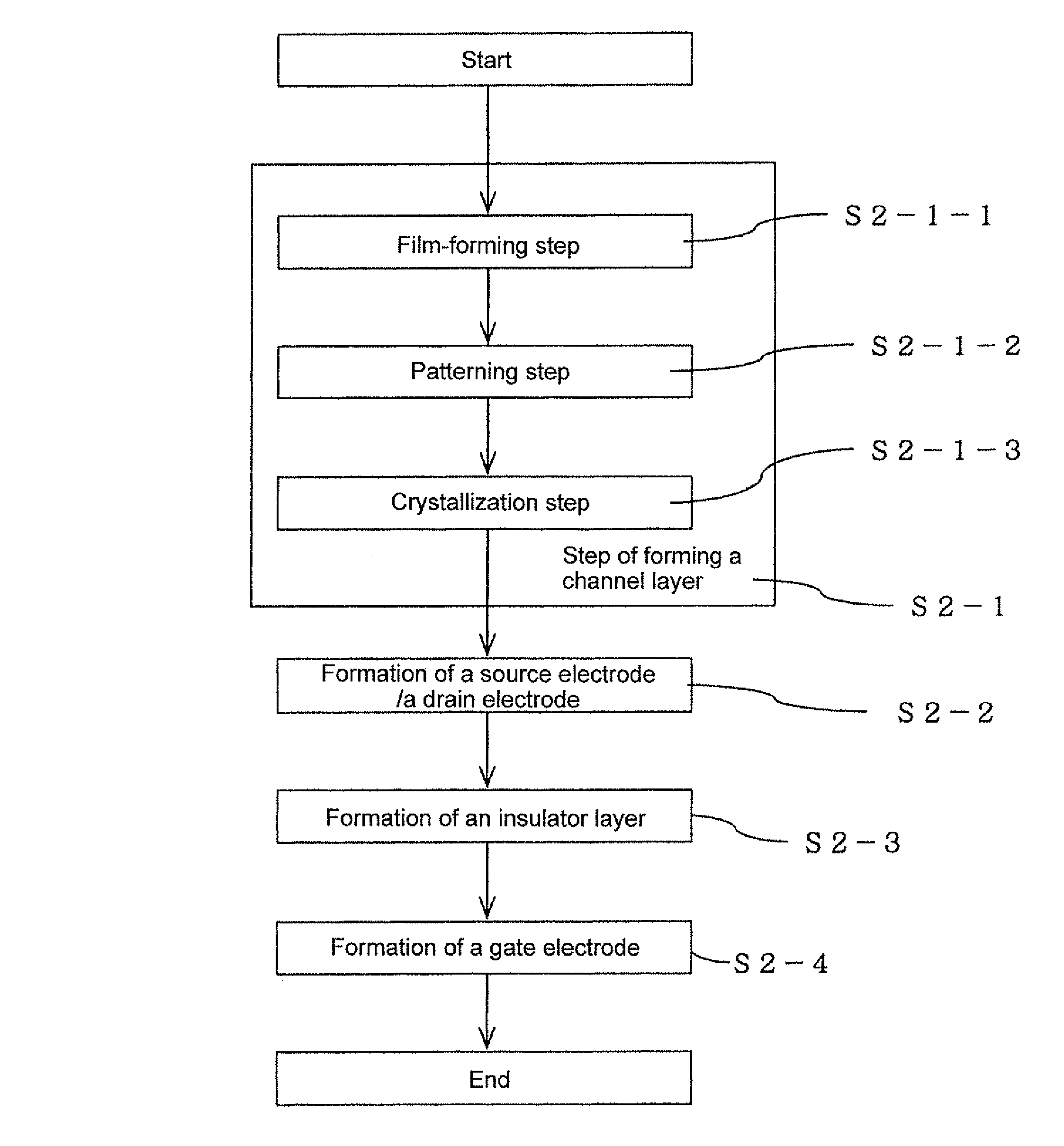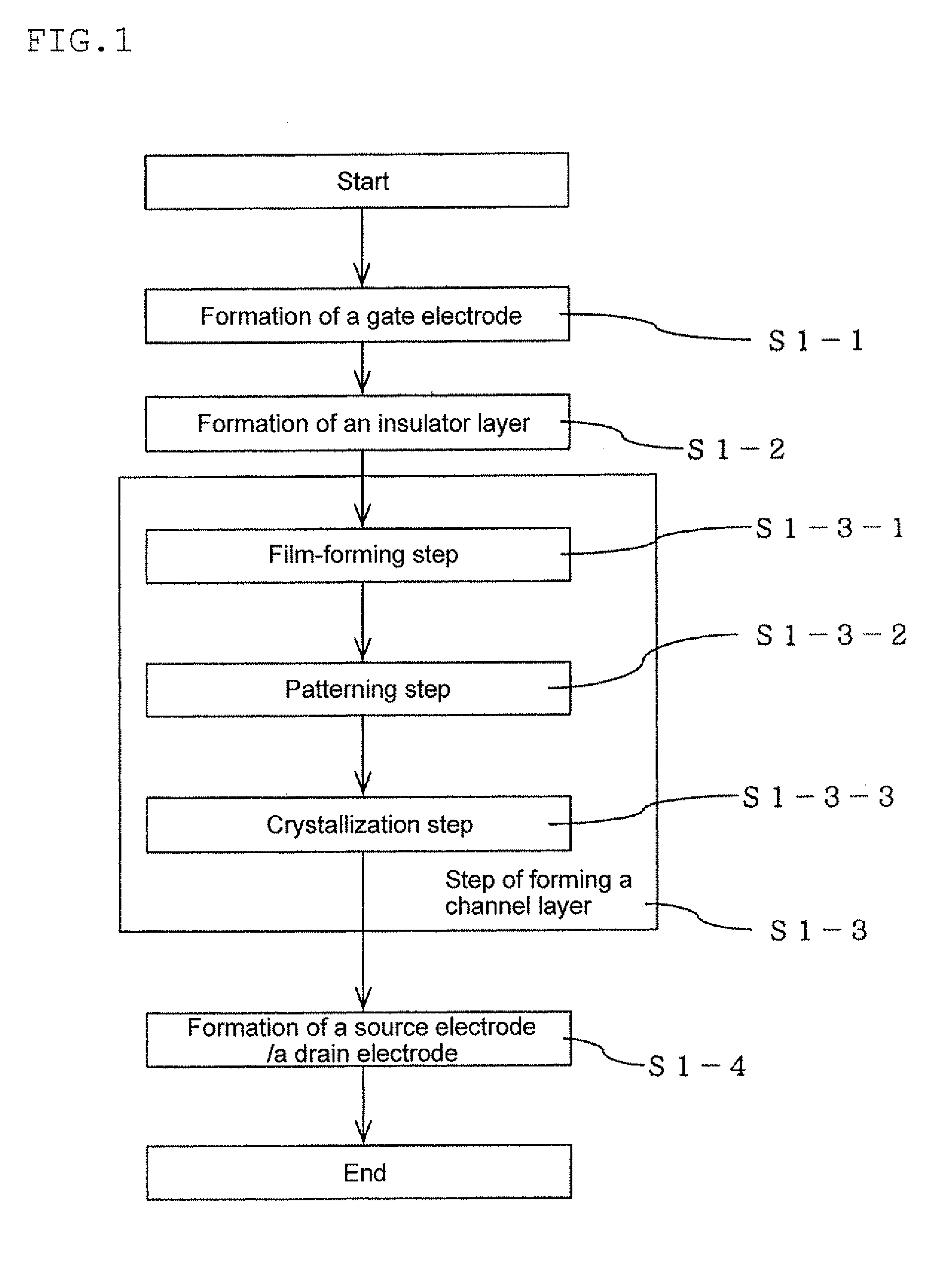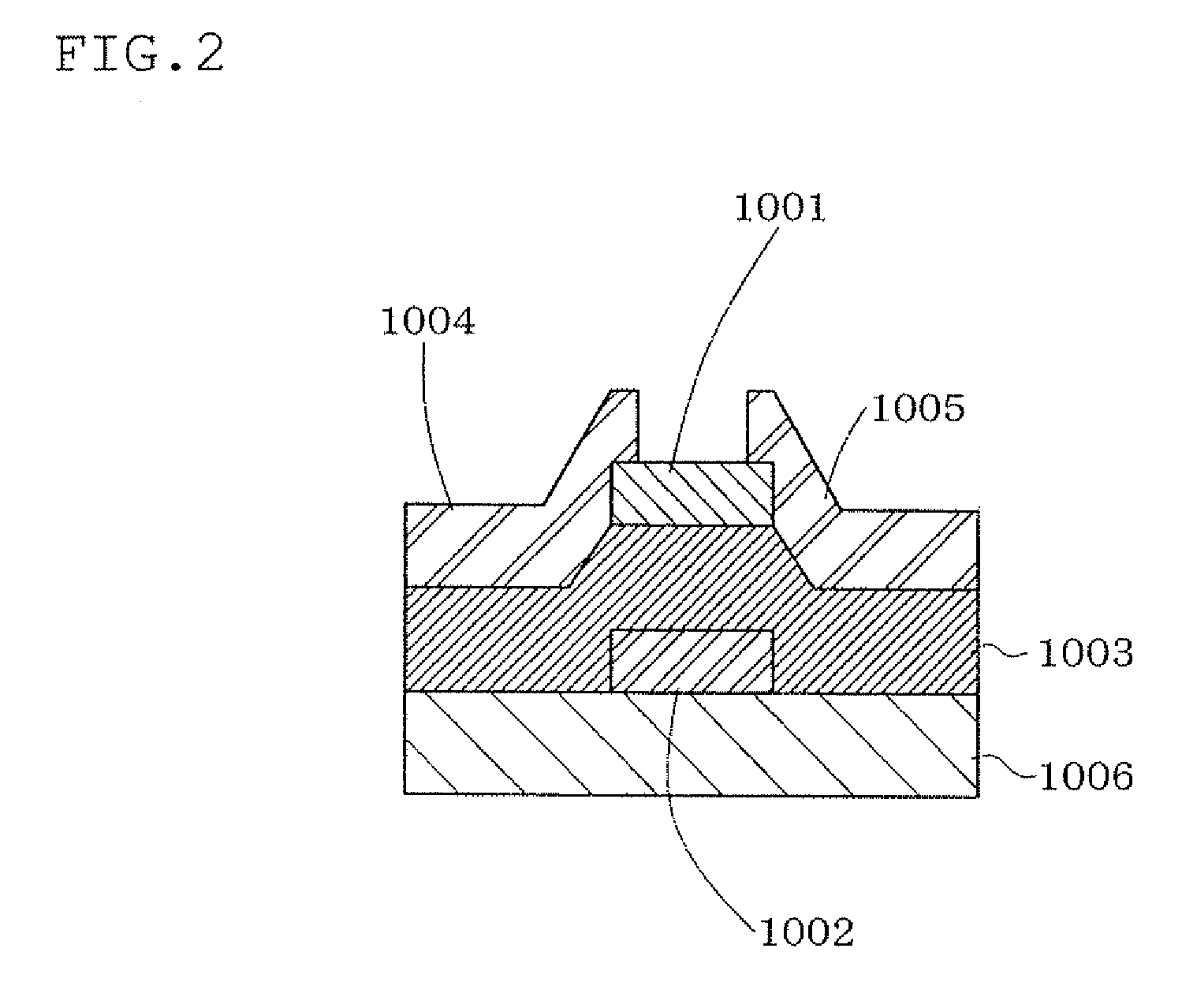Thin film transistor manufacturing method, thin film transistor, thin film transistor substrate and image display apparatus, image display apparatus and semiconductor device
a technology of thin film transistors and manufacturing methods, applied in static indicating devices, instruments, vacuum evaporation coatings, etc., can solve the problems of difficult film forming, large amount of energy and an increased number of steps, and difficulty in reducing the number of masks or the like, etc., to achieve the speed of film forming, the effect of improving the mobility and on-off ratio, and improving the time required for film forming
- Summary
- Abstract
- Description
- Claims
- Application Information
AI Technical Summary
Benefits of technology
Problems solved by technology
Method used
Image
Examples
example 1
[0227]In this example, an inverted-staggered type thin film transistor shown in FIG. 2 was manufactured according to the process shown in FIG. 1.
(1) Non-alkaline glass (Corning 1737 glass, manufactured by Corning Inc.) was used as a substrate 1006 (see FIG. 3 (a)).
(2) Mo was formed into a film of 200 nm by the DC magnetron sputtering method as a conductive film 1002a (see FIG. 3(b)).
(3) The conductive film 1002a was patterned by the photolithography using a PAN etching solution (40° C.), whereby a gate electrode 1002 was formed (see FIG. 3(c), S1-1).
(4) SiNx was formed as a gate-insulating film by the CVD method, whereby an insulator film 1003 was formed (see FIG. 4, S1-2).
[0228](5) An In2O3—ZnO sputtering target (atomic ratio [In / (In+Zn)]=0.93, atomic ratio [Zn / (In+Zn)]=0.07) and the glass substrate 1006 obtained in (4) above were installed in the film-forming equipment of the DC magnetron sputtering method, which is one of the DC sputtering methods, and a film was formed. The sput...
example 2
[0231]The method for producing a thin film transistor in this example was substantially the same as that in Example 1, except that, in the sputtering in (5), an In2O3—ZnO sputtering target (atomic ratio [In / (In+Zn)]=0.98, atomic ratio [Zn / (In+Zn)]=0.02) was used.
[0232]The thin film transistor produced by the method as mentioned above had a channel width L of 100 μm, the channel length W of 500 μm, and a W / L of 5. This thin film transistor exhibited the field-effect mobility of 35 (cm2 / Vs), 104 or more of an on-off ratio and normally-off properties.
[0233]An electron microscopic observation after the etching with an oxalic acid etching solution in (6) above revealed that a slight amount of etching residues remained.
[0234]In addition, 20 thin film transistors were manufactured by the same method as mentioned above. It was found that 17 of them operated normally, while 3 did not operate.
example 3
[0235]The method for producing a thin film transistor in this example was substantially the same as that in Example 2, except that the atmospheric gas used in the sputtering in (5) composed of 99 vol % of Ar and 1 vol % of H2O.
[0236]The thin film transistor produced by the method as mentioned above had a channel width L of 100 μm, the channel length W of 500 μm, and a W / L of 5. This thin film transistor exhibited a field-effect mobility of 35 (cm2 / Vs), 106 or more of an on-off ratio and normally-off properties.
[0237]An electron microscopic observation after the etching with an oxalic acid etching solution in (6) above revealed that almost no etching residues remained.
[0238]In addition, 20 thin film transistors were manufactured by the same method as mentioned above. It was found that all 20 transistors operated normally.
PUM
 Login to View More
Login to View More Abstract
Description
Claims
Application Information
 Login to View More
Login to View More - R&D
- Intellectual Property
- Life Sciences
- Materials
- Tech Scout
- Unparalleled Data Quality
- Higher Quality Content
- 60% Fewer Hallucinations
Browse by: Latest US Patents, China's latest patents, Technical Efficacy Thesaurus, Application Domain, Technology Topic, Popular Technical Reports.
© 2025 PatSnap. All rights reserved.Legal|Privacy policy|Modern Slavery Act Transparency Statement|Sitemap|About US| Contact US: help@patsnap.com



